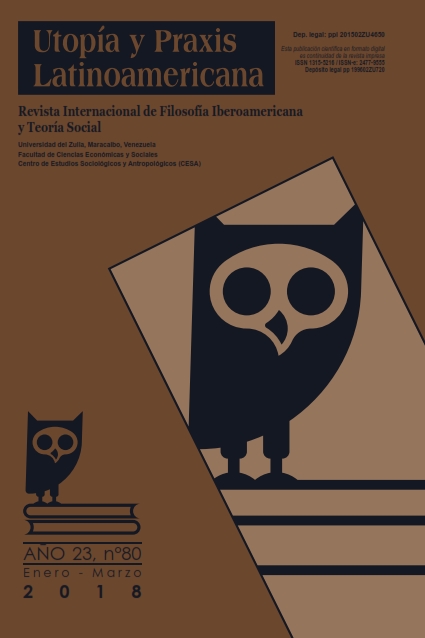El impostor como parodia del absoluto
Resumen
El anticristo es el paradigma del impostor: más que una parodia, es la emulación del “Hijo de Dios” o la verdad encarnada. En tiempos de la así llamada “post-truth” y de la proliferación de “fake news”, el problema de la impostura parece muy urgente. En este contexto, a menudo se plantea la cuestión de cómo proteger nuestro interés original por la verdad y la autenticidad frente a quienes propagan continuamente el simulacro. Pero como sugiere este artículo, tal vez esta reacción sólo confirma la afirmación de Diderot: “Es cuando todo es falso cuando amas la verdad”.Citas
Armogathe, J.-R. (2005). L’antéchrist à l’âge classique. Exégèse et politique. Mille et une nuits, Paris. Armogathe, J.-R. (2013). Figures de l’Antéchrist à l’Âge classique. In: Damont, J. Ch. (ed.), Figures de
L’imposture. Entre philosophie, littérature et sciences. Les Editions Desjonquères, Paris.
Bauduin, A. (2007). Psychanalyse de l’imposture. PUF, Paris. Carrère, E. (2000). L’adverssaire. Folio, Paris.
Carrère, E. (2016). Le royaume. Folio, Paris.
Critchton, R. (1959). The Great Imposter. The Amazing Careers of Waldo Demara. Random House, New York.
Furedy, F. (2003). Therapy Culture: Cultivating Vulnerability in an Uncertain Age. Routledge, London.
Gravois, J. (2011). “You’re not fooling anyone”, citado por: Sakuklu, J. y Alexander, J. (2011). The Impostor
Phenomenon, International Journal of Behavioral Science, 6, 1.
Highsmith, P. (1993). The Talented Mr Ripley. Vintage Books, London.
Irving, C. (1969). FAKE! Adventures of the Greatest Art Forger of Our Time. Mcgraw-Hill, New York.
Jankélévitch, V. (1942). Du mensonge. Confluences, Paris.
Konnikova, M. (2016). The Confidence Game. Viking, New York.
Mc Ginn, B. (2000). Antichrist. Two Thousand Years of the Human Fascination with Evil. Columbia University Press, New York.
Polet, G. (2006). Excusez les fautes du copiste. Folio, Paris.
Rose Clance, P. (1993). The Imposture-syndrome, Psychotherapy: 30, 3.
En su libro, Emmanuel Carrère habla de una manera muy conmovedora del momento en que Pablo (Paul) empieza a temer la idea de que él mismo (el mono de Cristo) pueda ser un impostor o incluso el anticristo. Por lo tanto, advirtió a los Gálatas, diciéndoles: “Aunque un ángel del cielo viniera a decirte algo distinto de lo que yo te dije, no deberías creerlo. Aunque viniera a decirte algo distinto de lo que te dije, no deberías creerme. Tendrías que maldecir al ángel, tendrías que maldecirme a mí” (Ibíd., p. 238).
Rogers, C. (2003). On becoming a Person, A therapist’s view on psychotherapy, citado por Rose Clance, P (1993). The Imposture-syndrome, Psychotherapy: 30, 3.
Sáez Rueda, L. (2015). El ocaso de Occidente. Herder, Barcelona.
Sakuklu, J. y Alexander, J. (2011). The Impostor Phenomenon, International Journal of Behavioral
Science, 6, 1.
Smerlak, M. (2016). Les trous noirs. PUF, Paris.










